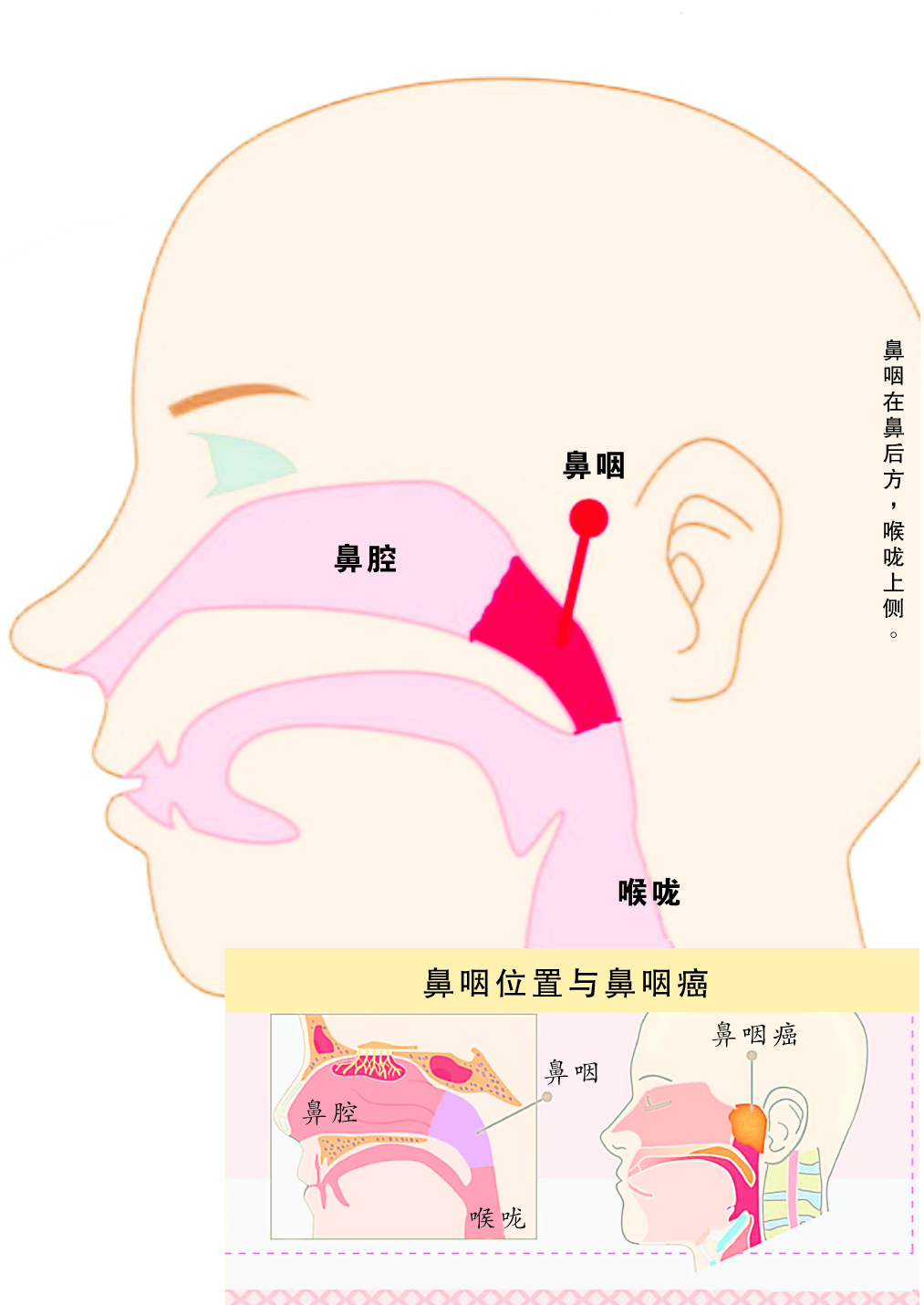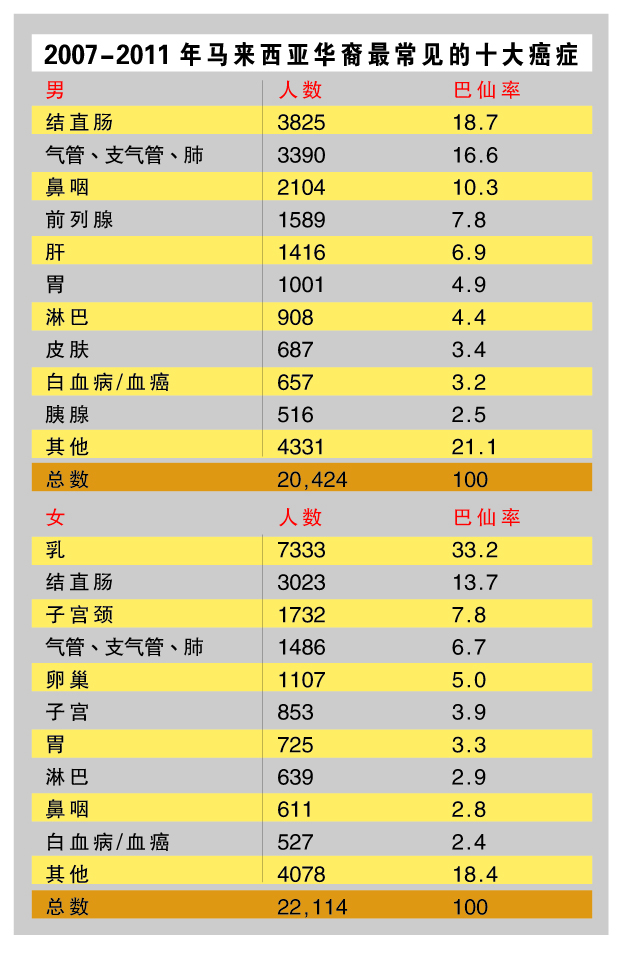Nasopharyngeal cancer is elusive but the cure rate is extremely high
Today, let’s learn about this elusive cancer called nasopharyngeal cancer by cancer experts!
Ye Yuyao: After comprehensive treatment, patients with early-stage nasopharyngeal cancer will have a very high cure rate, including Lee Chong Wei, so I believe he can definitely continue to play on the court as before, given time.
Dr Yap Yoke Yew, former president of the Malaysian Association of Otolaryngology-Head and Neck Surgery and an otolaryngologist, pointed out that nasopharyngeal cancer (NPC) is an “elusive” cancer because it grows in the nasopharynx , a hidden area behind the nasal cavity and on the throat that is “neither visible nor touching,” making early detection extremely challenging.
On the other hand, symptoms of nasopharyngeal cancer include double vision, blood in saliva or nasal discharge, neck lumps, tinnitus, and hearing loss. Symptoms of nasopharyngeal cancer are often mistaken for other illnesses such as eye diseases or general minor ailments, leading to delays in treatment.
Ye Yuyao explained: "Even with sophisticated blood tests such as 'EBV VCA/IgA antibody', 'EBV EA/IgA antibody' and 'EBNAI IgA antibody', we can only predict whether a person belongs to the nasopharyngeal cancer risk group, but There is no way to confirm the diagnosis unless an otolaryngologist performs a sinus endoscopy (Nasal Endoscopy).
"It should be noted that if the tumor has not yet grown during the scan, the condition cannot be diagnosed. At this time, it is particularly important to follow up every six months to detect the tumor and treat it as early as possible, because the 'early stage' of nasopharyngeal cancer usually only lasts for one year."
Early on and maybe the third issue too!
Recently, there have been rumors on social media that Datuk Lee Chong Wei is suffering from stage 3 nasal cancer. However, BAM has clarified that he is suffering from early stage nose cancer. However, there are still rumors that Datuk Lee Chong Wei is suffering from stage 3 nasal cancer? Is there any difference between the third period and the early period?
Ye Yuyao explained that the so-called early stage of nasopharyngeal cancer usually refers to the first to third stages in this cancer classification, and the most dangerous and troublesome stage is the fourth stage!
Staging explanation of nasopharyngeal cancer:
cancer grade signs
Patients in the first stage (early stage) will have symptoms such as loss of hearing, tinnitus, bloody saliva, and bloody nose.
Patients in the second stage (early stage) will have symptoms such as the first stage, neck lumps, and recurrence
Stage III (early stage) patients have cancer cells that have spread to the lymph nodes or into the brain
In stage 4 (terminal) patients, cancer cells have spread further to the lungs, bones, and liver
“In the first to third stages, the disease free survival rate in the first three years is as high as 90 to 95%. If the recurrence free survival rate is 5 to 10 years, it may be 80 to 85%.
“In nasopharyngeal cancer, even if the third-stage cancer cells have spread, the recurrence-free survival rate in the first three years after comprehensive treatment is still 90 to 95%.”
He pointed out that even though nasopharyngeal cancer is difficult to detect, it is one of the most treatable cancers as long as the symptoms are discovered, diagnosed and the right medicine is prescribed as soon as possible.
Unfortunately, because this cancer is difficult to detect, 70% of patients do not see an ear, nose and throat (ENT) doctor until 6 months after symptoms appear, thus delaying early treatment. It should be noted that once nasopharyngitis enters the fourth stage, it becomes very difficult. "
Comprehensive treatment before it happens
Although the incidence rate of nasopharyngeal cancer in the world is 1 person/100,000 people, this cancer is very common in Southeast Asia, especially among ethnic Chinese; the indigenous people of Sabah and Sarawak, especially Bidayuh, Kadazan and Iban ethnic group; followed by Malays, and relatively few Indians. Nasopharyngeal cancer mostly occurs in people aged 30 to 50, with a male to female ratio of 3 to 1.
Ye Yuyao pointed out that apart from close monitoring of early symptoms and regular physical examinations, there are no specific preventive measures for nasopharyngeal cancer, but high-risk groups need to be more vigilant.
"Early diagnosis is extremely important, especially for Chinese, Sabah and Sarawak aboriginals, followed by Malays. As long as there are obvious symptoms of nasopharyngeal cancer, you should have an ear, nose and throat examination (ENT examination) as soon as possible; if you are a direct relative or relative of nasopharyngeal cancer, Family, you also need to see an ear, nose and throat surgeon for endoscopy so that cancer can be caught and treated in its early stages."

Diagnosis and treatment procedures
Ye Yuyao explained that the main treatments for nasopharyngeal cancer are electrotherapy and chemotherapy; nasopharyngeal cancer is diagnosed by an otolaryngologist and treated by an oncologist, and both parties cooperate with each other.
To diagnose nasopharyngeal cancer, an ENT surgeon will use a sinus endoscopy (Nasal Endoscopy) and a Neck Examination. If a suspicious lesion is found in the nasopharynx, the doctor will perform a simple, quick, and painless biopsy (Biopsy) on the patient in the outpatient clinic to confirm the diagnosis.
Ye Yuyao said that only more complex biopsies require general anesthesia. During treatment, doctors must also use magnetic resonance imaging (MRI) or computed tomography (CT) to assess the tumor stage and proceed with treatment.
"After comprehensive treatment, patients with early-stage cancer will have a very high cure rate. After cure, the patient must continue to follow up the condition and observe the symptoms with sinus endoscopy and positron emission tomography (PET CT Scan) Whether it has been remitted or relapsed, it has lasted up to 5 years. After all, the recurrence rate is still 5 to 10%."
He emphasized that comprehensive treatment of up to 6 to 7 weeks is very important and cannot be done only two or three times and then stopped. "The side effects of electrotherapy are dry mouth, 'burned' skin, and oral ulcers; the function of chemotherapy is to assist electrotherapy, and the dose is not as high as that of blood cancer, so the side effects are relatively few."
Sinus endoscopy: Sinus endoscopy is one of the most critical examination methods in the diagnosis of nasopharyngeal cancer. It's easy to do and the results are reliable. The doctor will use an endoscope (a long, thin optical fiber) to pass through the patient's nasal cavity and deep into the nasopharynx and throat to check whether there are any abnormal lesions in the mucous membranes of the nasopharynx and throat.
Blood tests cannot confirm the diagnosis
Although domestic medical skills are sufficient to treat Lee Chong Wei's condition, Ye Yuyao does not rule out the possibility that Lee Chong Wei needs private space and travels to Taiwan for treatment.
He also believed that even if Lee Chong Wei had done routine physical examinations, he might not have had early symptoms, nor might he have done precise blood tests. "Besides, blood tests cannot confirm the diagnosis, so there is still a 10 to 20% miss rate."
He pointed out that Hong Kong, Taiwan, and Guangdong have many cases, so their medical skills are more experienced; Singapore and Malaysia also have relatively complete medical facilities, and my country also has advanced high-precision radiotherapy (IMRT) and image guidance Radiotherapy (IGRT).
Top 5 cancers in my country
According to a recent report by the Malaysian National Cancer Registry, from 2007 to 2011, 103,507 people were diagnosed with cancer in the country, with 45.2% and 54.8% of men and women respectively; the risk of cancer for men and women was 1/2 respectively. 10 and 1/9.
Reports show that nasopharyngeal cancer is the fifth most common cancer. The 5 most common cancers are:

Ye Yuyao pointed out that according to a survey report in Sarawak, the incidence rate of nasopharyngeal cancer in Bidayuh is 26 people/100,000 people, which is higher than 1 person/100,000 people in the world. West Malaysia is 5.4 people/100,000 people, and Sarawak is 13.5/100,000 people.
This cancer is more common in Guangdong Province of China, Hong Kong, Taiwan and Southeast Asia, and has been shown to be genetically related.
There are many causes of nasopharyngeal cancer, including genetics, preserved foods such as salted fish, vegetables containing nitrosamines (Carcinogenic Nitrosamines), and Epstein-Barr viral infection.
In Malaysia, the 2008 Nasopharyngeal Carcinoma Database shows that wood workers are a high-risk group. The reason may be related to the pesticides and formaldehyde used in the wood industry.

Will we still see Lee Chong Wei dominate the stadium?
I believe people in the country want to know and are eager to see Lee Chong Wei continue to bring glory to the country again. Regarding this issue, Ye Yuyao said: "Maybe he is not so strong at the beginning, but he can definitely continue as before and given time, he can play on the court again."
Talking about some past cases, he pointed out that one of his patients was a fitness instructor, and he also had a doctor friend who suffered from nasopharyngeal cancer ten years ago. Both of them have recovered well and continue to engage in their original careers.
Know more:
EBV-CA is an Epstein-Barr virus test, and negative means normal. It means there is no virus, which means it is healthy.
Epstein-Barr virus (EBV) is a member of the genus Lymphotropic Virus in the family Herpesviridae and is carried by more than 95% of adults. It is the causative agent of infectious mononucleosis and is closely related to the occurrence of nasopharyngeal cancer and childhood lymphoma. It is listed as one of the human tumor viruses that may cause cancer.
EB virus is not produced by tumor tissue, but among patients with nasopharyngeal carcinoma, more than 90% of EB virus tests are positive. Therefore, VCA/IgA (capsid antigen antibody), EA/IgA (early antigen antibody), EBNA/IgA (nuclear antigen antibody) Antigen and antibody) measurement can be used as one of the methods for physical examination to screen for nasopharyngeal cancer. Normal values are: VCA/IGA (capsid antigen antibody IgA) ≤ 1:10, EA/IGA (early antigen antibody IgA) negative.
